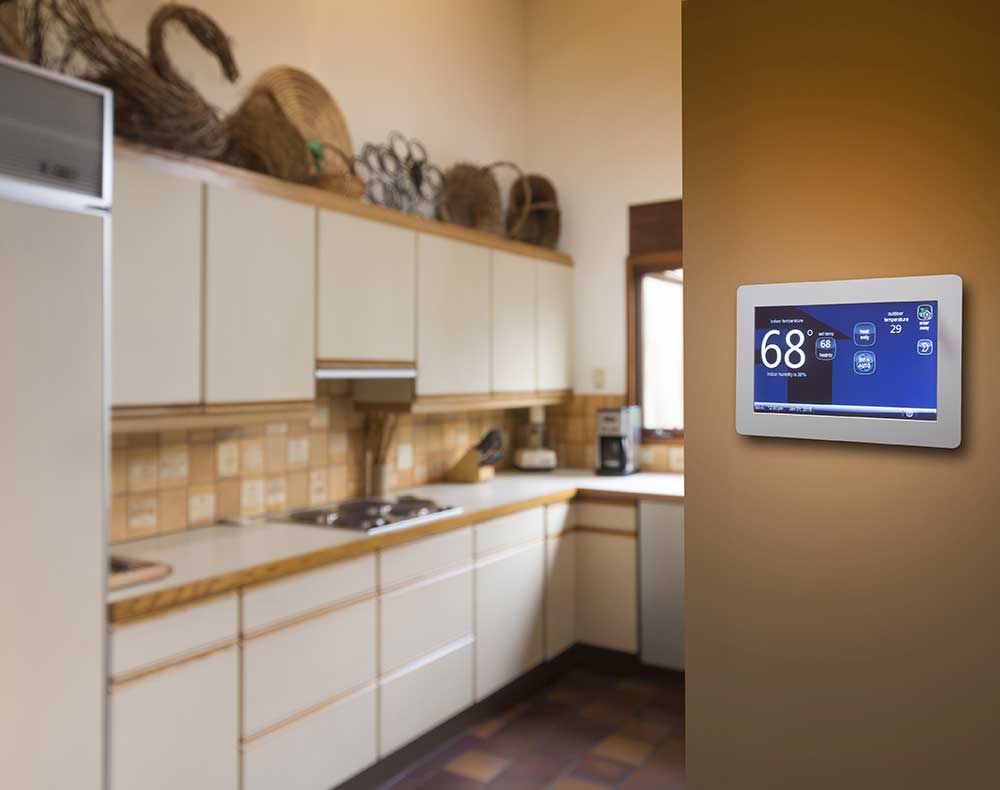
A zoned heating and cooling system is one of the best ways to ensure the comfort of your home and reduce its energy consumption.
Zones are different areas of the home that have different heating and cooling needs. In a two-zone house, for example, the bedrooms may be on one zone, and the rest of the house on a second. A home might be set up this way because bedrooms are typically not in use at the same time as the kitchen, dining room and family room. If the home were on a single zone, you would have to heat or cool every part of the house in order to make it comfortable in just one part of it. And that would mean a lot of energy going to waste heating or cooling rooms that aren’t in use at that time.
There are other reasons to “zone” a home or other building beside the rooms being used at different times of the day. Different parts of a building may get hotter or colder due to the building’s layout – for example, the upper floors of a home normally get hotter than the lower ones, because heat rises and because the sun shines on the roof. An addition that sticks out from the rest of the house may have three exterior walls, whereas most other rooms have only one or two. The more exposed surface area, the more quickly the room will be affected by the outside temperature. Shade trees may keep one side of a house cool, and different amounts of insulation and numbers of windows will also make a difference. Even the color and material of the siding can have an effect, dark colors absorbing more heat than light ones.
How the home is used also has an effect. Rooms with exterior doors that are used frequently will cool more often and more frequently during the winter than rooms without exterior doors. And some people just like their part of the home warmer or cooler than others. Just because the kids like to “sleep cold” doesn’t mean the parents should have to.
There are two key elements to a zoned heating and cooling system: the thermostats, and the control devices.
Every zone needs its own thermostat to detect temperature changes and turn the HVAC (heating/ventilating/air conditioning) system on and off for that zone.
The control devices differ with the type of heat the home uses. Homes with hot water radiators or baseboards have a separate hot water circuit for each zone, controlled by a zone valve. When the thermostat indicates that a room is getting cool, it sends a signal to the zone valve to open up, sending hot water from the boiler or furnace into that circuit. When the zone reaches the desired temperature, the thermostat tells the valve to close again.
Hot air heating systems and central air conditioning system operate on a similar principle, but instead of zone valves and water lines, they use electronically controlled dampers to open or close the air ducts leading to the zones.
According to the Department of Energy, zoned heating can reduce a home’s utility bills by 30% compared to a non-zoned system. All newly-built homes should have zoned systems, and almost all existing non-zoned homes can be economically converted to a zoned system to provide fairly quick payback, along with an immediate improvement in the family’s comfort.
Home Comfort Experts provides heating and cooling installation, repairs, replacement and maintenance throughout Indiana. We can upgrade your current non-zoned home to a modern, energy-efficient multi-zoned system through our offices around the state. Contact us today for a free quotation.



